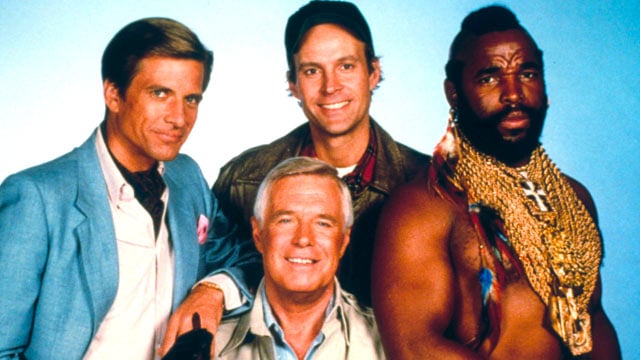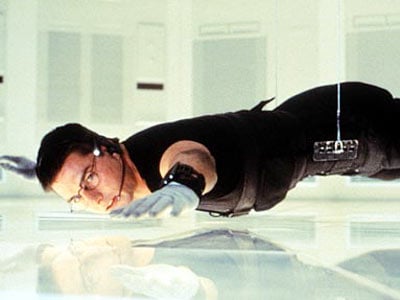Agenda writing for high-performance teams: Lessons learned from Mission Impossible and the A-Team
 There are lots of articles out there on how to put together an agenda, many of which focus on proper agenda etiquette, including formatting, logistics, and the judicious use of inspirational quotes.
There are lots of articles out there on how to put together an agenda, many of which focus on proper agenda etiquette, including formatting, logistics, and the judicious use of inspirational quotes.
If you’re running formal board meetings or regular committee meetings, then it makes sense to spend some time learning about the Standard Order of Business from Robert’s Rules and developing a good set of templates.
When a meeting fails to create a shared perspective, it’s usually because the meeting wasn’t structured to do so.
If you’re part of a team working to ship some sort of awesome in short order, you can look to the great undercover high performance teams from pop-culture for a few simpler rules. Bonus: if you’re a bit rusty on the references here, Mission Impossible is available on Netfilx streaming and The A-Team is on Hulu!
1. Make sure you have a clear meeting goal
Why exactly have you assembled this ace team of talented, busy people? Your meeting should have a clear goal. Do you need a roadblock cleared? A rival plot thwarted? Have you learned a stunning fact that requires a new plan?
Know what the team needs to accomplish before you bring them into a meeting, because remember – these are busy people!
 2. Keep the top-level agenda short
2. Keep the top-level agenda short
Seriously: always! You’re working with a team on a mission, each of whom holds all the details of their particular job roaring about in their head. If you’ve interrupted your team and brought them together, it means that there’s time-sensitive coordination they need to do.
If we could see the printed agenda for an Impossible Mission Force (IMF) meeting ahead of time, I’m sure it would look something like this:
- Situational Update
- The Plan
- Next Steps
The meeting agenda organizes the discussion around a few key themes that directly relate to the overall meeting goal, and should be easy for your team to absorb at a glance. During your meeting, you’ll go into all kinds of details about each agenda item – that’s what the meeting is for.
These details don’t all require a separate agenda item. For example, you won’t see “B.A.’s job” on any A-Team agenda; B.A. and Murdoch will discuss what they’re doing as part of overall discussion about The Plan.
Your cracker-jack meeting agendas should have no more than 3 to 5 top-level topics.
3. Provide details in advance
How does every Mission Impossible episode start? With the Mission Briefing! The team never gets together before first getting a sense of the threat, the challenging circumstances (nigh on impossible, even!), and the deadline.
When you create the agenda for your meeting, consider what your teammates should know ahead of time and make sure they get it. The safe-cracker can’t prepare and test a break-in strategy if he only learns about the bad guy’s security setup at the meeting. Similarly, your team can’t effectively make new decisions or help solve problems about things they’ve just learned.
Give them the background information they need and time to study it before your meeting if you want to hear the best they have to offer.
4. Put the most important stuff first
Usually there’s a critical constraint that challenges your team, something that either blocks all progress or around which all the other plans center.
In the Mission Impossible episode “Operation Rogosh”, the IMF team has to figure out why a freelance mass murderer is hanging around LA. As they work, they learn that he’s put a plan in place to kill thousands of people in 2 days!!!!
When the IMF team meets for their next project status meeting, do they start by discussing the details of how they each cleverly played their parts in capturing the bad guy? Heck no! They start with the “holy cow! 2 days!” news and get right to work adjusting their plans.
If you have a critical discussion item on your agenda, put it first. This ensures it’s addressed while everyone is still fresh, and establishes the group’s focus around what’s most important.
5. Make sure there’s time for questions
While it’s important to use your meeting time efficiently, it’s even more important to make sure your teammates leave the meeting with a clear sense of what they need to do and what they can expect from one another. In a high-performing team, you can expect the questions to be relevant and for answers to come from many team members.
If you find the conversation veering off-topic or wandering into speculation, then it’s your job as the meeting leader to cut it off, perhaps assigning someone to find an answer after the meeting. Otherwise, get out of the way so the team can learn from each other.
“How exactly are we going to get past the General’s secretary?”
Face replies, “Leave it to me.” ‘Nuff said.
6. Finish by summarizing next steps
This is a good practice for every meeting. You’ve spent time together discussing issues, making decisions and creating plans, all of which can blur together once you leave the room.
To ensure that the next steps are clear for everyone, briefly repeat them at the end of the meeting. This way, everyone hears and acknowledges their specific assignment right before they leave.
Face just volunteered to “distract” the General’s secretary, B.A. has a school bus to retrofit, Murdoch must secure a helicopter, and Hannibal has a cunning disguise to prepare. Everyone clear? Watches synchronized?
If you haven’t tried running your agenda this way before, you’ll be surprised at how invigorating your meetings can be. Soon you too will start quoting Col. John ‘Hannibal’ Smith: “I love it when a plan comes together.”
Lucid provides pre-formatted meeting agenda templates, structure, and automation support you need to ensure your meetings stay on target and effective.
Images: abcnews.go.com



